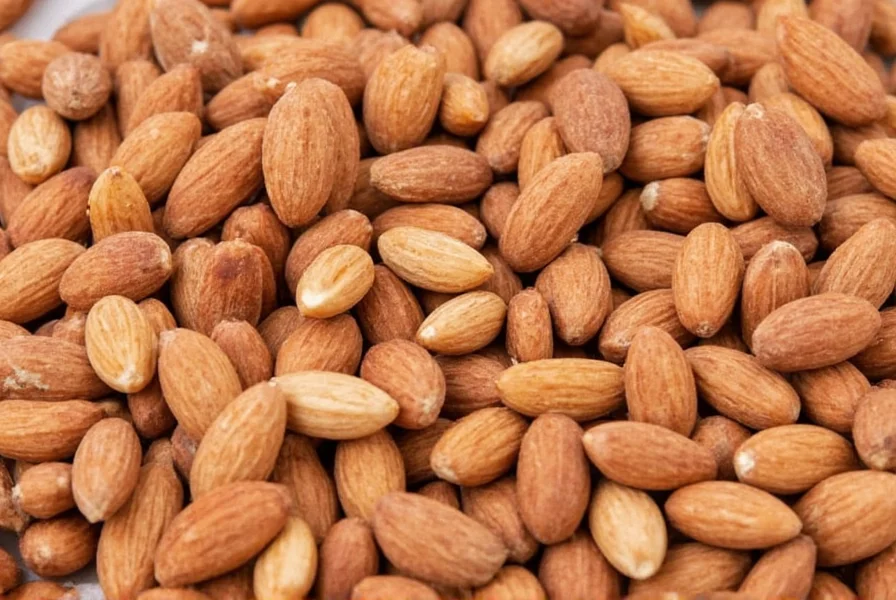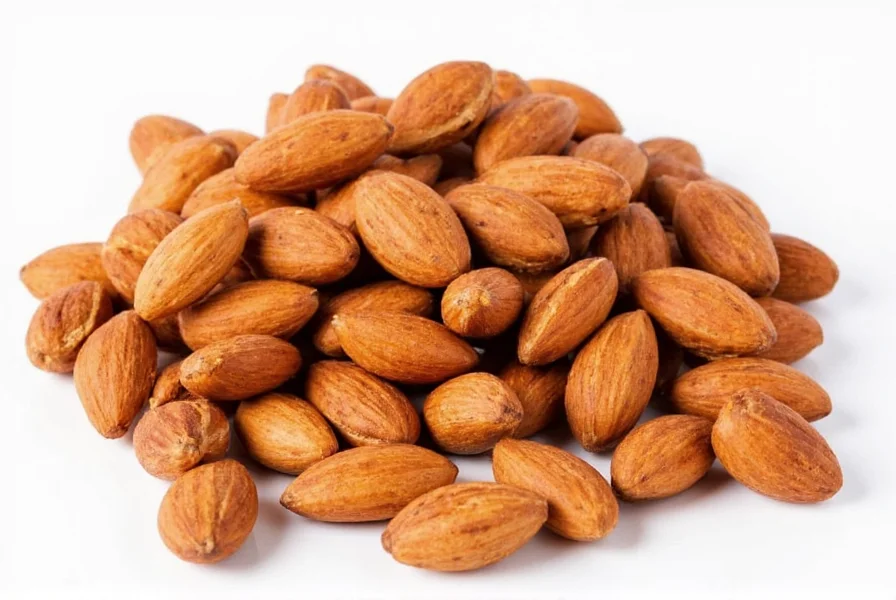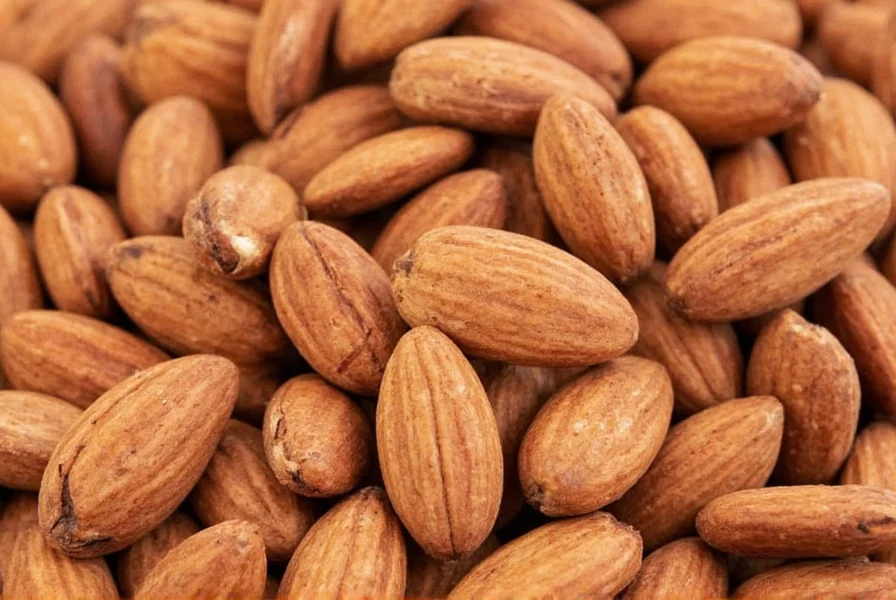Cinnamon almonds represent a perfect marriage of two powerhouse ingredients that have been valued for centuries. These spiced nuts combine the satisfying crunch of almonds with the warm, aromatic flavor of cinnamon, creating a snack that's both delicious and nutritionally impressive. Whether you're looking for a quick energy boost, a healthy dessert alternative, or a flavorful addition to your recipes, cinnamon almonds deliver on multiple fronts.
What Exactly Are Cinnamon Almonds?
Cinnamon almonds are typically raw or roasted almonds that have been coated with a mixture of cinnamon and sometimes a small amount of sweetener like honey, maple syrup, or coconut sugar. The coating may also include additional spices such as nutmeg, cardamom, or vanilla for enhanced flavor complexity. Unlike many commercial flavored nuts that contain excessive sugar and artificial ingredients, properly prepared cinnamon almonds maintain the nutritional integrity of the whole almond while adding the health-promoting properties of cinnamon.
The preparation method significantly impacts both flavor and nutritional value. The best homemade versions use minimal added sweeteners, allowing the natural flavors to shine while preserving the health benefits. Commercial varieties can range from lightly dusted with cinnamon to heavily coated with sugar and oil, so checking ingredient labels is essential for health-conscious consumers.
Nutritional Profile of Cinnamon Almonds
Almonds themselves are nutritional powerhouses, and adding cinnamon enhances their health profile without compromising their core nutritional benefits. A standard one-ounce (28g) serving of plain almonds contains approximately 160-170 calories, 6g protein, 14g healthy fats, and 3-4g fiber. When prepared with minimal added sweeteners, cinnamon almonds maintain these impressive nutritional characteristics while gaining additional benefits from cinnamon.
| Nutrient | Plain Almonds (1 oz) | Cinnamon Almonds (1 oz, homemade) |
|---|---|---|
| Calories | 164 | 170-180 |
| Protein | 6g | 6g |
| Fat | 14g | 14g |
| Carbohydrates | 6g | 7-8g |
| Fiber | 3.5g | 3.5g |
| Sugar | 1g | 2-4g |
The slight increase in carbohydrates and sugar in homemade cinnamon almonds comes from the minimal sweetener used in the preparation. Commercial versions often contain significantly more sugar—sometimes 8-12g per serving—making homemade preparation the healthier option for those watching their sugar intake.
Health Benefits of Cinnamon Almonds
The combination of almonds and cinnamon creates a synergistic effect that enhances their individual health benefits. Almonds are rich in monounsaturated fats, vitamin E, magnesium, and plant-based protein, while cinnamon contains powerful antioxidants and anti-inflammatory compounds.
Research suggests that regular consumption of almonds can improve heart health by reducing LDL cholesterol levels and improving arterial function. The monounsaturated fats in almonds also help with nutrient absorption and satiety, making them an excellent snack for weight management. Cinnamon, particularly Ceylon cinnamon, contains cinnamaldehyde and other compounds that may help regulate blood sugar levels and reduce inflammation.
A notable study published in the American Journal of Clinical Nutrition found that consuming almonds as part of a healthy diet improved cardiovascular risk factors. Meanwhile, research in the Journal of the Academy of Nutrition and Dietetics indicates that cinnamon supplementation may improve insulin sensitivity in people with prediabetes. While these studies examined each ingredient separately, combining them creates a snack that potentially offers compounded health benefits.
How to Make Perfect Cinnamon Almonds at Home
Creating delicious cinnamon almonds at home is remarkably simple and allows you to control the ingredients for maximum health benefits. Here's a reliable method that produces perfectly roasted, flavorful nuts without excessive sugar:
Basic Homemade Cinnamon Almonds Recipe
Ingredients:
- 2 cups raw almonds
- 1 tablespoon pure maple syrup or honey (optional)
- 1½ teaspoons ground cinnamon
- ¼ teaspoon sea salt
- ½ teaspoon vanilla extract
- 1 teaspoon coconut oil, melted (optional)
Instructions:
- Preheat oven to 325°F (165°C) and line a baking sheet with parchment paper
- In a medium bowl, combine maple syrup, cinnamon, salt, vanilla, and coconut oil
- Add almonds and toss until evenly coated
- Spread almonds in a single layer on the prepared baking sheet
- Bake for 12-15 minutes, stirring once halfway through
- Remove from oven and let cool completely on the baking sheet
- Store in an airtight container at room temperature
For optimal results, avoid overcrowding the baking sheet and resist the temptation to increase the oven temperature to speed up the process. Lower and slower roasting preserves the nutritional integrity of the almonds while allowing the flavors to develop fully. The almonds will continue to crisp as they cool, so don't worry if they seem slightly soft when first removed from the oven.

Variations for Different Dietary Needs
One of the advantages of making cinnamon almonds at home is the ability to customize them for specific dietary requirements:
- Sugar-free version: Omit the sweetener entirely—the natural nuttiness of almonds pairs beautifully with cinnamon alone
- Vegan option: Use maple syrup instead of honey
- Spicy kick: Add a pinch of cayenne pepper for cinnamon roasted almonds with a surprising heat
- Extra crunch: Add a light egg white coating before adding spices for a crispier texture
- Floral notes: Incorporate a touch of orange or lemon zest for bright citrus undertones
Storage Tips for Maximum Freshness
Proper storage is crucial for maintaining the crunch and flavor of your homemade cinnamon almonds. When stored correctly, they can stay fresh for up to four weeks. The key is to ensure they're completely cooled before storing, as any residual moisture can cause them to become soggy.
Store cinnamon almonds in an airtight container at room temperature, away from direct sunlight. Glass jars with tight-fitting lids work particularly well. For longer storage (up to three months), keep them in the refrigerator. If you've made a large batch, consider freezing portions in freezer-safe bags—you can take out just what you need and let it come to room temperature before eating.
Avoid storing cinnamon almonds in the same container as other strongly flavored foods, as nuts readily absorb surrounding odors. If your almonds lose their crunch, you can refresh them by spreading them on a baking sheet and warming them in a 300°F oven for 5-7 minutes.
Creative Ways to Enjoy Cinnamon Almonds
Beyond enjoying them as a standalone snack, cinnamon almonds can elevate numerous dishes:
- Top Greek yogurt or oatmeal for added crunch and flavor
- Include in homemade trail mix with dried fruit and dark chocolate chips
- Crush and use as a topping for roasted vegetables
- Add to salads for texture contrast
- Incorporate into baked goods like muffins or breads
- Pair with apple slices for a satisfying snack
- Use as a garnish for soups, particularly butternut squash or sweet potato varieties

Important Considerations
While cinnamon almonds offer numerous health benefits, there are a few considerations to keep in mind. Almonds are calorie-dense, so portion control remains important for those monitoring their calorie intake. A standard serving is about one ounce or roughly 23 almonds.
Additionally, those with tree nut allergies should obviously avoid almonds altogether. When selecting cinnamon, opt for Ceylon cinnamon when possible, as it contains significantly lower levels of coumarin than the more common Cassia variety. Coumarin, while generally safe in small amounts, can cause liver issues in sensitive individuals when consumed in large quantities over time.
Commercial cinnamon almond products often contain added oils, sugars, and preservatives that diminish their health benefits. Reading ingredient labels carefully can help you identify products that maintain the nutritional integrity of the base ingredients. The best options list only almonds, cinnamon, and perhaps a minimal sweetener as ingredients.
Frequently Asked Questions
Are cinnamon almonds good for weight loss?
Cinnamon almonds can support weight management when consumed in appropriate portions. The protein, fiber, and healthy fats in almonds promote satiety, helping to reduce overall calorie intake. A one-ounce serving provides about 6g of protein and 3.5g of fiber, which can help you feel full between meals. However, they are calorie-dense (approximately 170 calories per ounce), so portion control is essential. Choose versions with minimal added sugar for the best weight management benefits.
How do cinnamon almonds affect blood sugar levels?
When prepared with minimal added sweeteners, cinnamon almonds can have a positive effect on blood sugar regulation. Almonds have a low glycemic index and contain healthy fats and fiber that slow carbohydrate absorption. Cinnamon, particularly Ceylon cinnamon, contains compounds that may improve insulin sensitivity. Research suggests that consuming cinnamon with carbohydrate-containing meals can reduce post-meal blood sugar spikes. However, commercially prepared versions with significant added sugar may negate these benefits.
What's the difference between homemade and store-bought cinnamon almonds?
Homemade cinnamon almonds typically contain fewer ingredients and less added sugar than commercial varieties. While homemade versions might list just almonds, cinnamon, and a small amount of sweetener, store-bought options often include additional oils, preservatives, and significantly more sugar—sometimes 8-12g per serving compared to 2-4g in homemade versions. Commercial products may also use lower-quality Cassia cinnamon, which contains higher levels of coumarin. Making your own allows complete control over ingredients and ensures maximum nutritional benefit.
Can I eat cinnamon almonds if I have diabetes?
Yes, cinnamon almonds can be a suitable snack for people with diabetes when prepared with minimal added sweeteners. The combination of healthy fats, protein, and fiber in almonds helps moderate blood sugar response, while cinnamon may improve insulin sensitivity. A study published in Diabetes Care found that cinnamon consumption was associated with improved fasting glucose levels. However, portion control remains important, and those with diabetes should opt for versions without added sugar or with minimal natural sweeteners. Always consult with your healthcare provider about dietary choices related to diabetes management.
How long do homemade cinnamon almonds stay fresh?
Properly stored homemade cinnamon almonds will stay fresh for 2-4 weeks at room temperature in an airtight container. For extended freshness, store them in the refrigerator for up to 3 months or in the freezer for up to 6 months. The key to longevity is ensuring the almonds are completely cooled before storage and kept away from moisture and strong odors. If they lose their crunch, you can refresh them by spreading on a baking sheet and warming in a 300°F oven for 5-7 minutes. Avoid storing them in humid environments, as this will cause them to become soggy more quickly.











 浙公网安备
33010002000092号
浙公网安备
33010002000092号 浙B2-20120091-4
浙B2-20120091-4